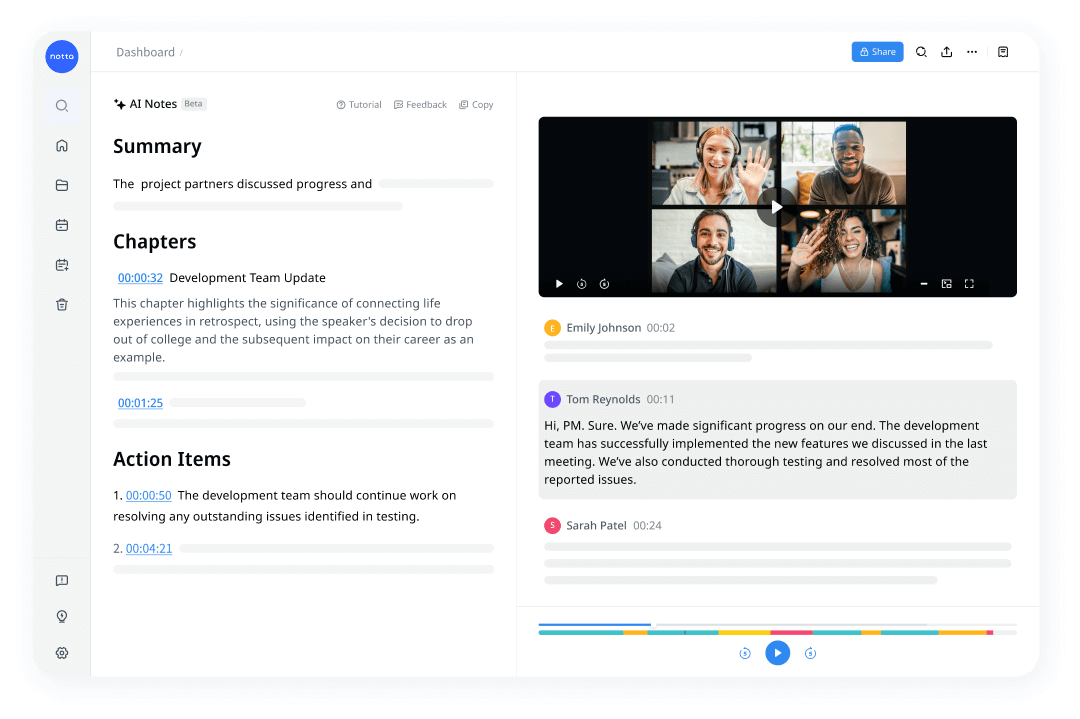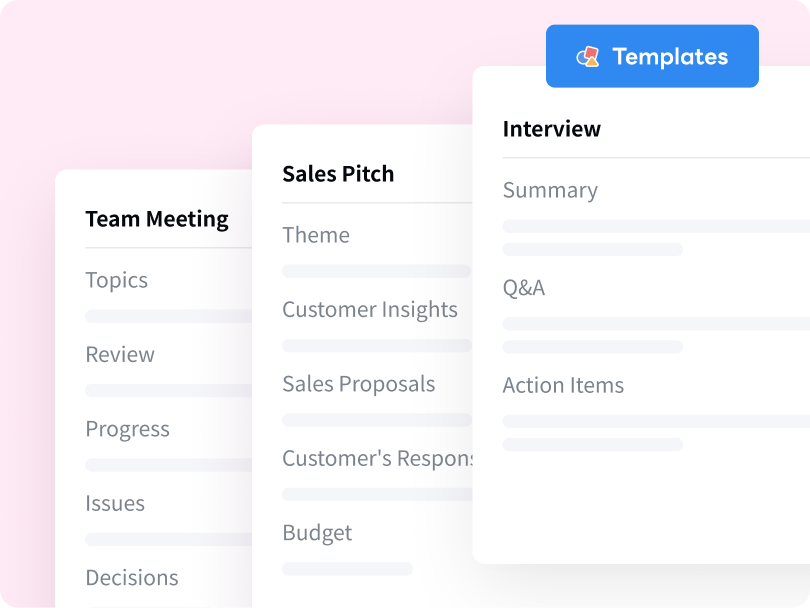Keeping up with long documents like business plans or project proposals can be a tricky task. I wrote my first business plan when I started my company (so I know the firsthand challenges). I've learned a lot since then — and, most importantly, the need to put a lot of thought into it and make ideas work.
A business plan or project proposal may not seem like the most important or complicated document, but it can guide the entire company and can even be shared with investors to win prospects. But there's another document that's equally important — and that is an executive summary.
It's a short, informative version of the long document — business plan or proposal — that includes all the critical information anyone needs in one go. Here's how to write an executive summary (with examples) so you never have to read the entire report just to get a few details.
What is an executive summary?
Before I get into how to write an executive summary, let's first understand what it is. An executive summary is a short, informative overview of a long document that clearly defines the main idea of the business plan, report paper, or project proposal.

Think of it as boiling the entire document (concept, vision, outcome, and everything in between) down to a few pages. Its length typically depends on the particular document you're summarizing — and can be somewhere between 1-2 pages.
Of course, executive summaries are unique documents, so there's no one-size-fits-all. Depending on what you're summarizing — a business plan, project proposal, annual report, or research document — your summary will look a little different.
How to write a great executive summary?
Writing a long document and summarizing only the important information from one are two different things. Unlike your original document, which outlines everything in detail, the executive summary condenses the main idea into a few pages.
Here's how to write an executive summary with a clear roadmap.
Step 1: Tell your company's mission & vision
Start the executive summary by telling your company's story or the mission statement of the business plan — and try to communicate the vision you have for it. It should reflect your goals, values, and other important details that were discussed in the business plan — setting the tone for the rest of the summary. Ask yourself if the first few lines will make your business sound profitable, credible, and feasible.
Step 2: Highlight the project's objectives
Next, focus on the project objectives or discuss the problem you will be solving. Your aim here is to provide readers with a comprehensive view of the key findings and insights from the long document. You might even include a basic explanation about the target market and address the pain points for more clarity.

Step 3: Explain the solution
Describe the project in detail and lean heavily on the solutions — in an authoritative language. Identifying the target audience and writing the project objectives isn't enough, you'll need to provide solutions or any results that they can expect. You can even include project risks, relevant financial information, and potential benefits covered in the business document.
Step 4: Wrap with a conclusion
You've successfully covered the project objectives (problems) and provided the solutions — great! But as we've often heard, 'It ain't over till it's over,' and the summary ain't over yet. At the end, conclude by highlighting the key findings, presenting the key recommendations, and writing the next actionable steps (future plans) — guiding readers on what to do next.
Capture every detail with AI meeting notes
Notta offers the most integrated AI meeting notes, summaries, and action items so nothing gets missed.
Example of an executive summary
The simple executive summary for the business plan template outlines the key business objectives, problems, and solutions — in only 1-2 pages. Compiling all this information into one document will help the readers (business partners, team, and even investors) understand the main idea and navigate the plan.
Here's an executive summary example for a business plan I put together to give you a quick idea of what it might look like once it is complete.
Example: Executive Summary Format for Business Plans
[Your Company Name]: XYZ
[Business Plan Title]
[Date]
[Mission]
The mission of XYZ is to deliver products that are sustainable, eco-friendly, and ethical.
[Vision]
The vision is to play a major role in shaping a sustainable world.
[The Product]
At XYZ, we create products and services that meet the customer requirements — and are made from eco-friendly, recyclable, and renewable materials.
[Position Yourself as an Expert]
With over three major players that are dominating the market, we stand out by manufacturing more environment-friendly products.
[The Future Plans]
By 2030, we will launch a recycling program in five big cities. Looking ahead to 2050, our goal is to supply recyclable and renewable products to all top-tier brands.
Tips for writing an effective executive summary
Before you start putting the executive summary together, ask yourself whether you understand the business plan. Once you've read it properly, here are a few more tips for writing an effective business plan executive summary.
Write for your audience
The tone, language, pronoun use, and personalization of the executive summary will depend on your audience. If the people reading the summary have a technical background, a mix of professional and technical words would make sense.

Be concise
You'll need to extract all the important information from the business plan and write it in 1-2 pages — and it's only possible if you understand the main idea before writing and write straight to the point. Remember your audience is reading the summary because they want short and crisp information — so don't overcomplicate it.
Use engaging language
Your executive summary should reflect the truth and key highlights of the business plan in an engaging tone. Keep the executive summary professional and concise — that's true to the target audience and your company. Many people often miss writing facts and figures — and that's where they make a mistake. I'd recommend you focus on presenting facts, figures, and evidence in a straightforward and engaging way.
Ask others to review the summary
Great ideas can come from any level — even if they're not directly related to the business plan. Once your business plan executive summary is ready, ask someone from your team to review it. You might also ask your senior or mentor to read the summary and give you fair feedback — and, most importantly, meet the reason behind writing it.

Use the AI summarizer app
There's very little chance that the first time you try to write a summary, the output is exactly what you're looking for. You need to read, write, test, refine, write, test, and so on until you get an outcome you're happy with.
Automation with AI keeps systems running smoothly — and generating an executive summary is no exception. If you don't want to struggle manually, you can even check out the popular AI summarizers — and see if it meets your needs.
One such tool is the Notta which comes with some amazing features like recording, transcribing, and summarizing media (audio and video) files. If the business plan is in recorded (audio or video) format, you can transcribe the speech to text using Notta

When you have the transcript ready, just use the Notta AI Summary Generator to summarize the key highlights, different chapters, and action items — with the help of advanced AI. You can check my ultimate AI summarizers guide, where I've reviewed the 10 best apps for generating executive summaries.
 Ready to revolutionize your post-meeting workflow? Give Notta's AI Summary Templates a try today and experience the difference for yourself. Simply select the template that best fits your needs, and watch as Notta transforms your raw notes into polished, concise summaries. Your time is precious – let Notta help you make the most of it.
Ready to revolutionize your post-meeting workflow? Give Notta's AI Summary Templates a try today and experience the difference for yourself. Simply select the template that best fits your needs, and watch as Notta transforms your raw notes into polished, concise summaries. Your time is precious – let Notta help you make the most of it.
Run effective team meetings with Notta
Notta AI meeting assistant records, transcribes, and summarizes meetings so everyone can stay engaged without missing important details.
FAQs
How long should an executive summary be?
Typically, an executive summary should be 1-2 pages long — but that's not the exact length that you should follow. That's because there's no hard and fast rule to 'how long should an executive summary be.'
But there's a trick: the executive summary length will directly depend on the document you are summarizing. In the end, the length should engage the readers and keep them hooked till the end. Try not to include any fluff and focus only on the important details.
How to write an executive summary for a project proposal?
Every client needs a slightly tweaked proposal copy with all the necessary details and crucial terms included. While the complete project proposal is important to catch the potential client's eye, you'll also need a short and informative executive summary.
Here's how to write an executive summary of the project plan:
You must start by describing the problem briefly and clearly — using active words. While writing the problem, make sure to include why it needs a solution.
The next step is to give your client the proper solution — right away. Here, you'll need to include specific numbers and even outcomes to define possible profits that the client can expect.
It's not enough to write a problem and then give the solution — the real power lies in how well you explain it. Don't go into full detail, but give an overview of the steps that helped you reach the solution.
It might feel good to overlook the risks while presenting the project plan — but the best way to win the proposal is to include potential challenges and offer some ways to avoid them.
Remember, investors are not mind-readers, and neither are your customers. An executive summary of the business plan or project proposal is the sum of the ideas, vision, passion, and other important things you shared in the long document.
Key takeaways
Many business owners often overlook the importance of an executive summary — but, in reality, it's one such document that can guide the team and help customers learn about the company.
If you are struggling with how to write an executive summary, start by downloading a free template and then fill in the information according to your business plan.
If that feels time-consuming, I'd recommend you check the AI note-taking tool like Notta. It can record, transcribe, and then summarize the media file into short, meaningful text.






 Ready to revolutionize your post-meeting workflow?
Ready to revolutionize your post-meeting workflow?